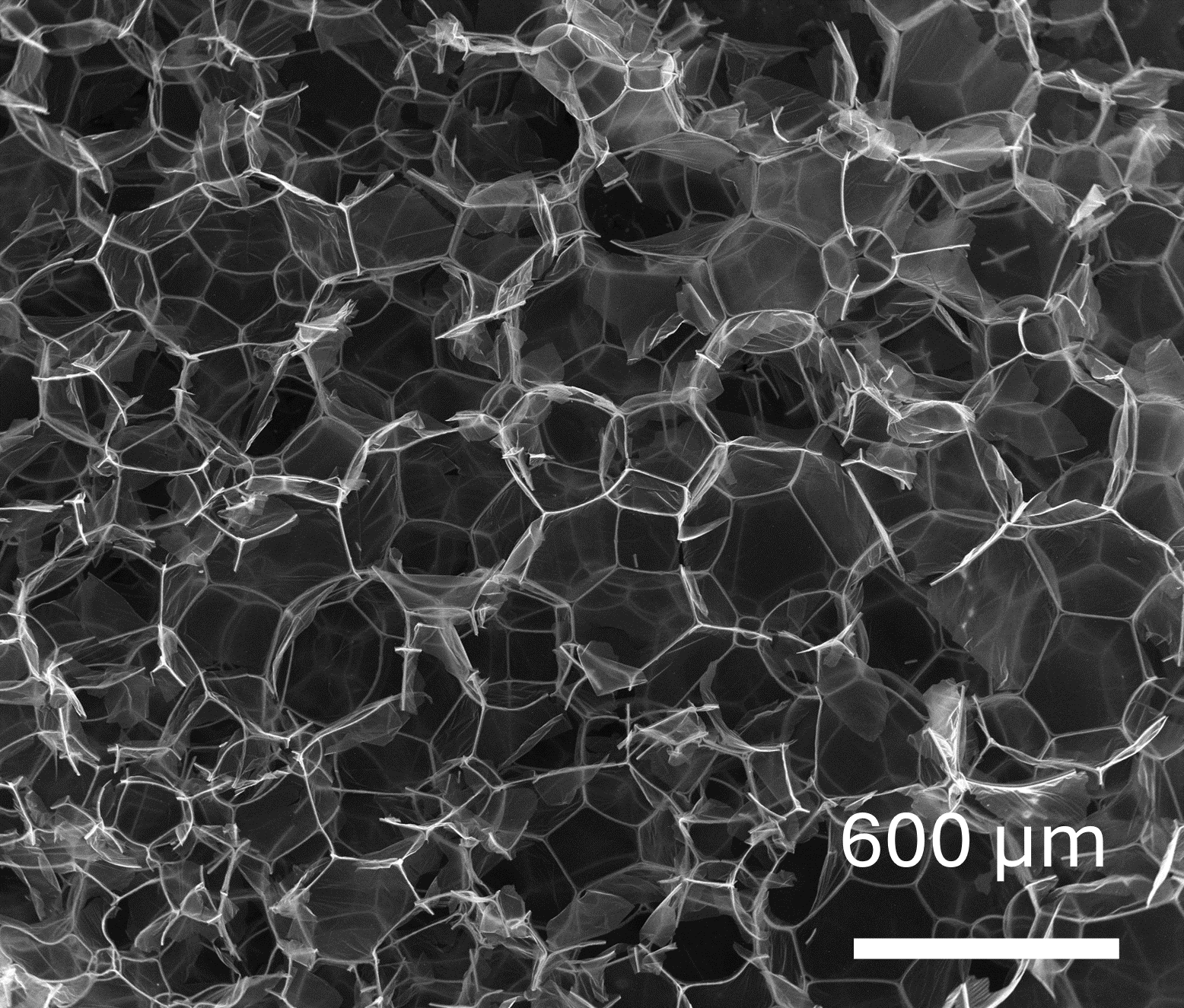Hierarchically porous graphitic sheet-based aerogels (HGAs) are ultra-low density materials that have garnered significant attention across various fields, including catalysis, electromagnetic shielding, energy storage/conversion, water purification, gas storage/separation, and biomedical applications, due to their exceptional electrical, electronic, electrochemical, and mechanical properties. However, current fabrication methods involve multiple steps, generate harsh chemical wastes, and lack covalent integration of graphitic sheets, which compromises their properties and scalability while rendering them unsustainable [1].
A particularly promising solution for enabling sustainable, bottom-up synthesis of such carbon structures is the use of naturally available protein precursors. This is due to their innate capability to form supramolecular aggregates [1]. To effectively implement proteins for developing complex graphitic aerogel self-assembly, it is essential to elucidate the underlying transformation mechanisms from precursor to the final hierarchically porous morphology. Furthermore, unraveling the intricate processing-structure-property relationships that dictate material optimization is critical for enabling the scalable production of high-performance and sustainable HGAs tailored for emerging applications.
This work introduces a novel self-foaming mechanism that enables the green and scalable synthesis of HGAs using naturally available protein precursors. Using in-situ characterization techniques, including optical microscopy complemented by time-resolved thermal and mass spectrometry, we elucidate the structural and chemical evolutions during protein transformation and understand the intricate foaming process. We found that controlled heating of protein precursors during a single-step pyrolysis induces intrinsic foaming via initial softening, gas evolution, and graphitization [2]. The liberated gases facilitate bubble expansion and coalescence, while the increasing temperature immobilizes and graphitizes the foamed structure, resulting in a hierarchically porous graphitic aerogel composed of a seamlessly integrated framework of sheets and fibers.
Building on our understanding of the formation mechanism, a systematic exploration of processing-structure-property relationships was conducted to tailor critical material performance metrics, including density, porosity, and electrical conductivity, and their impact on EMI shielding applications was investigated [3]. The bio-derived HGAs exhibited a specific shielding effectiveness per unit thickness (SSE/t) of over 16,400 dBcm2/g, governed by an absorption-dominated mechanism, which is significantly higher than previously reported carbon/graphene aerogels.
In summary, this simple yet effective synthesis strategy highlights the potential of protein precursors for engineering HGAs for diverse applications, such as high-performance EMI shielding. Elucidating this multidimensional parameter space facilitates unraveling the intricate interplay between tunable synthesis variables and resultant aerogel properties and structure. This enables the deliberate modulation of microstructural features for customized bulk functionality. This study provides guiding design rules for replicating the sustainable, bottom-up synthesis of high-performance HGAs in a facile one-step process, paving the way for their scalable production in next-generation technologies.
References:
[1] Ozden, S. et al. Egg protein derived ultralightweight hybrid monolithic aerogel for water purification. Mater. Today 59, 46–55 (2022).
[2] Wani, M. S., et al., Self-Foaming Morphogenesis of Hierarchically Porous Graphitic Aerogel (submitted)
[3] Wani, M. S., et al., Protein Derived Hierarchically Porous Graphitic Aerogel for Electromagnetic Shielding Interference (in preparation)


